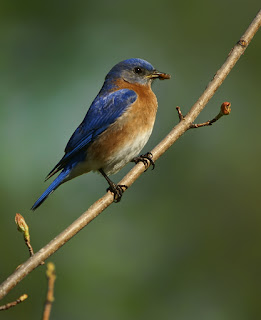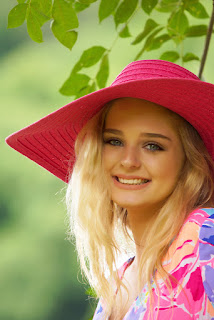Here are two examples. The first image is general scenic shot that required a short focal length lens 18mm along with a small aperture f/22. By doing so, virtually the entire image remains in focus from almost directly in front of the lens to all the back to the sky. This is an effective technique to use for most scenic shots.
This next image is a subject specific shot where I used a long focal length lens, 500mm, along with a relatively middle to large size aperture, f/6.3. The idea on this one was to isolate the blue bird against a blurred background. The 500mm lens does by itself shorten the DOF which in turn creates a blurred background, but when combined with a larger aperture the effect can become quite dramatic.
What is important here is understanding how to use Depth of Field effectively in a photograph. So let's discuss how I use it and what I look for.
I use a tight DOF and a wide DOF for all kinds of shots including both scenic and subject specific shots. Subject specific shots are those shots where you want to isolate your subject and emphasis its characteristics without interference from visual background noise. Portrait closeups are good examples on when to use this technique, like the image shown here.
I most often use this approach when the background is generic in nature and can be used primarily as a simple natural backdrop. When blurred, the background now becomes something that enhances the image as opposed to competeing with it. However, there are times I want to include the background as part of the portrait. This is most often applied when the background provides a Measure of Place for the portrait, like this next image which was shot as f/10 at 50mm. As you can see, the entire image remains in focus with the pillars providing a dramatic flavor to the image.
Keeping with that idea, scenic shots can be quite effective when created using a tight DOF. Shots like these are approached much the same way as closeup portraits. Hre, I wanted to isolate this branch of fall leaves against the golden brown of the background. By doing so, the background blurred as it is contributes to the color flavor of the image without interfereing with the main subject.
The point is...always be aware of your surroundings, especially what is in the background and plan your shots according to the type of DOF that will create the most appealing effect. It is a realtively simple concept that more often than not is not always properly used. By understanding how your camera / lens combination works in regards to DOF, you can use this technique to generate some amazing photographs.











